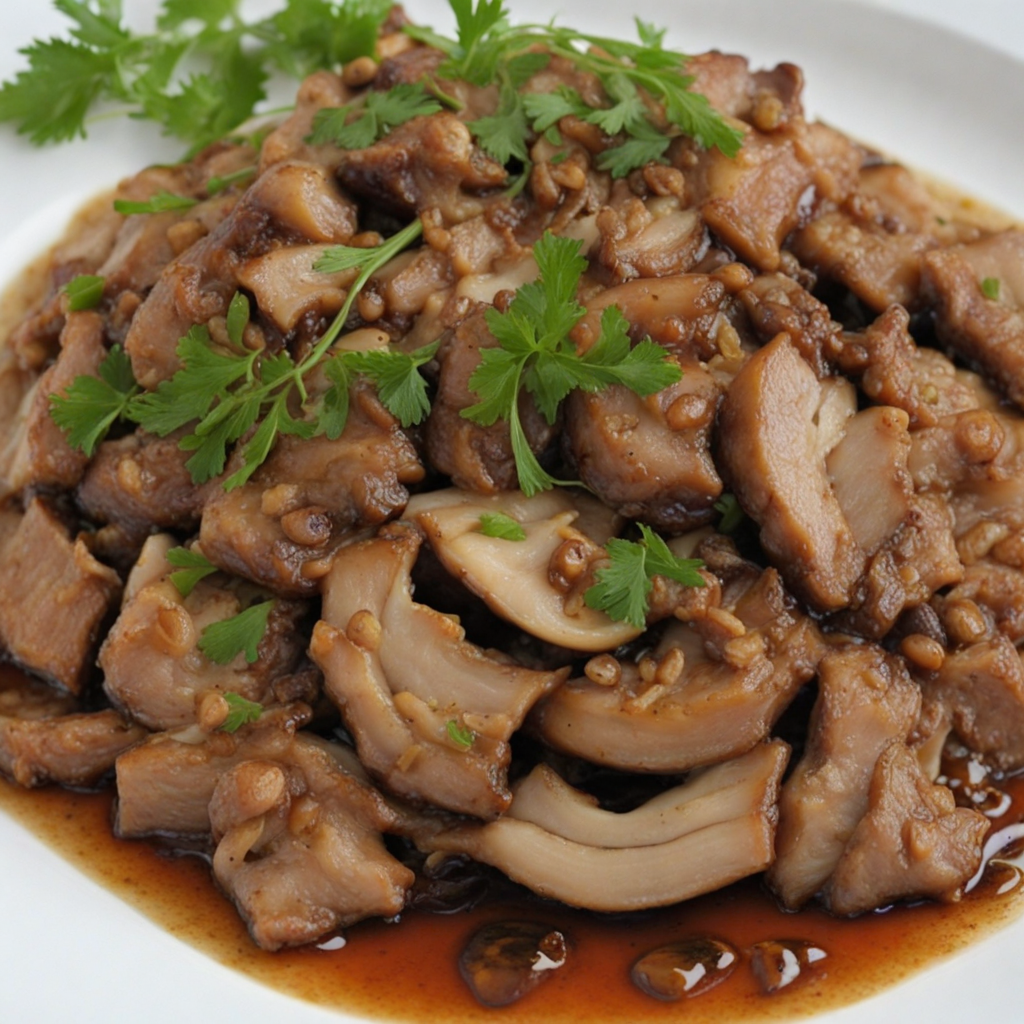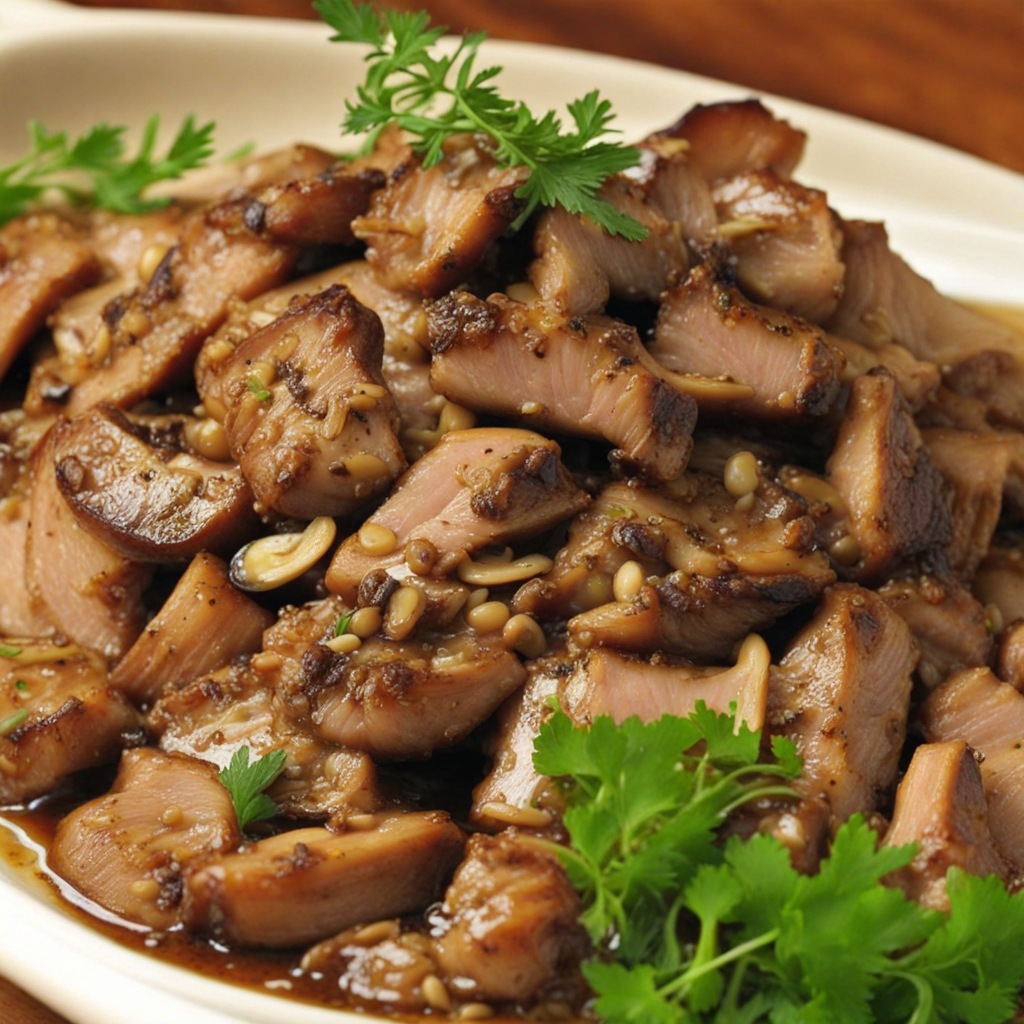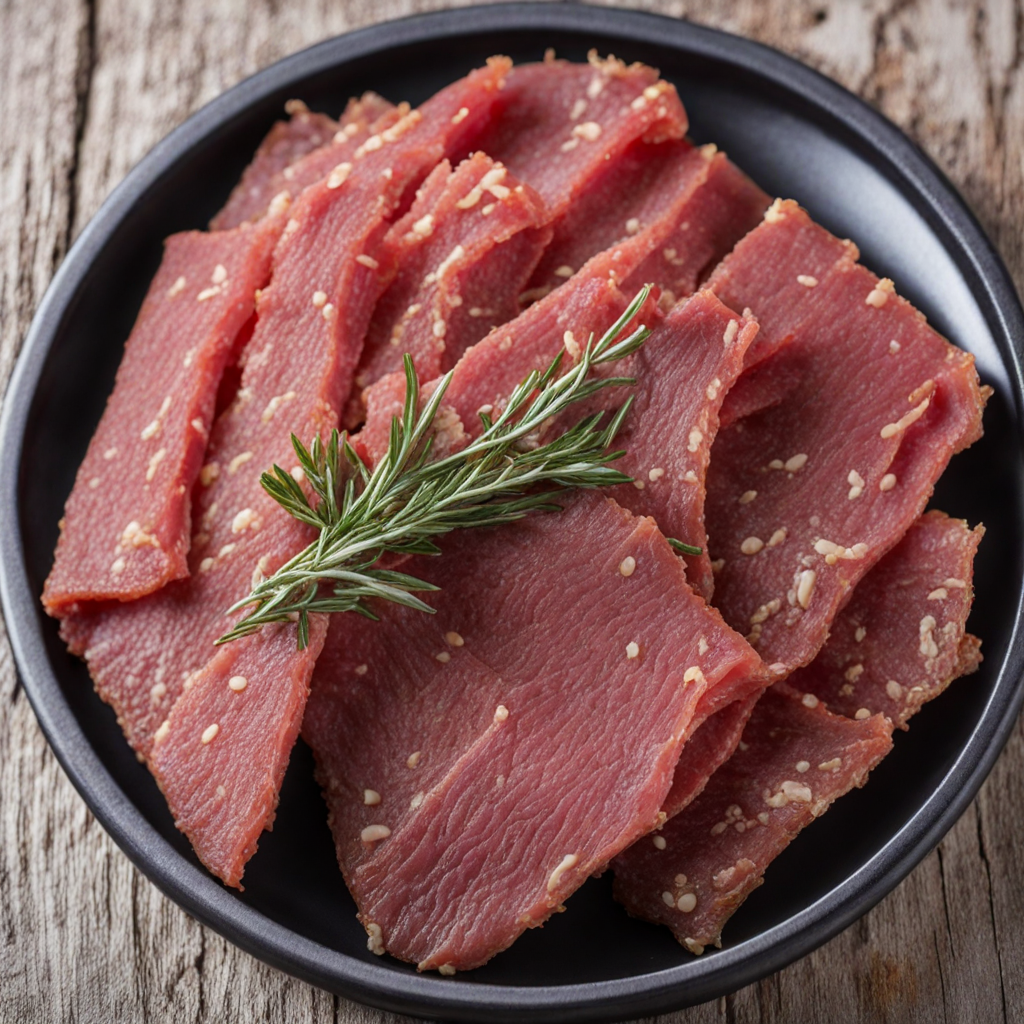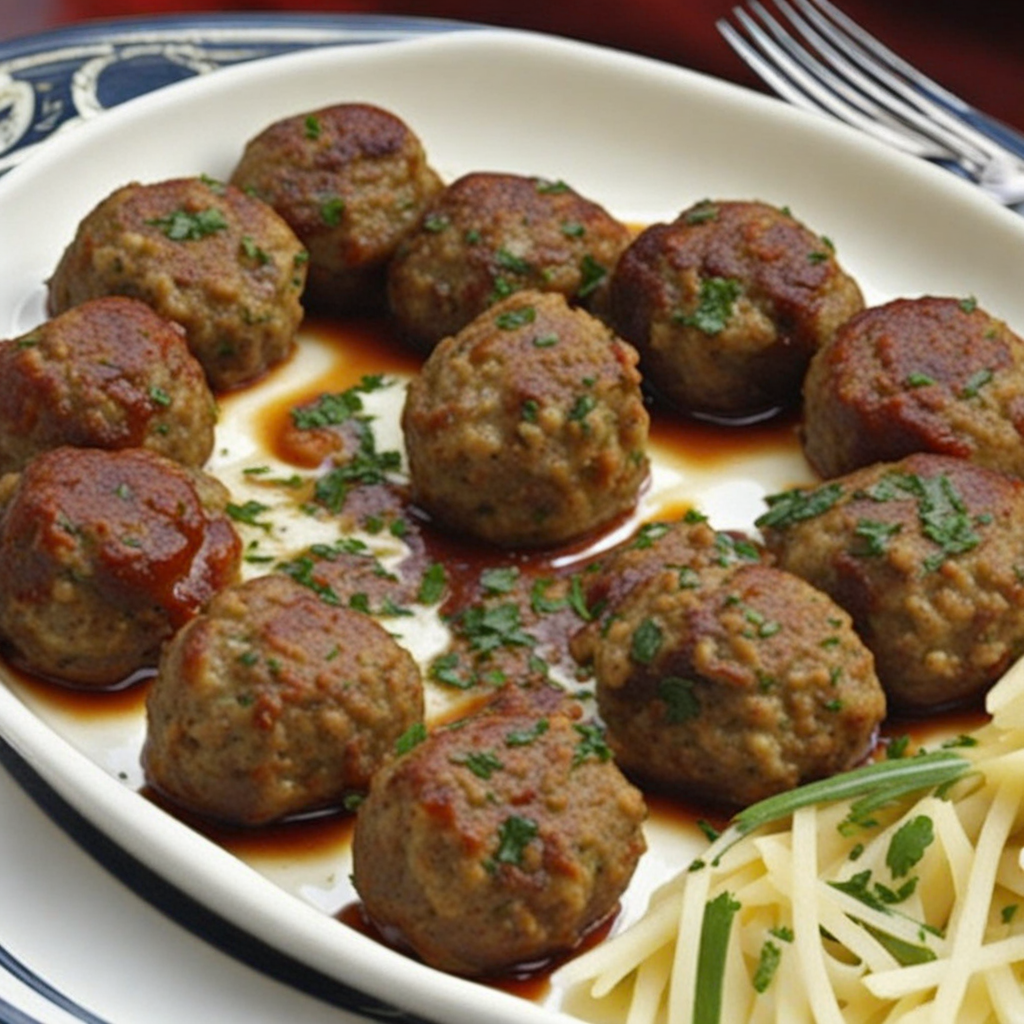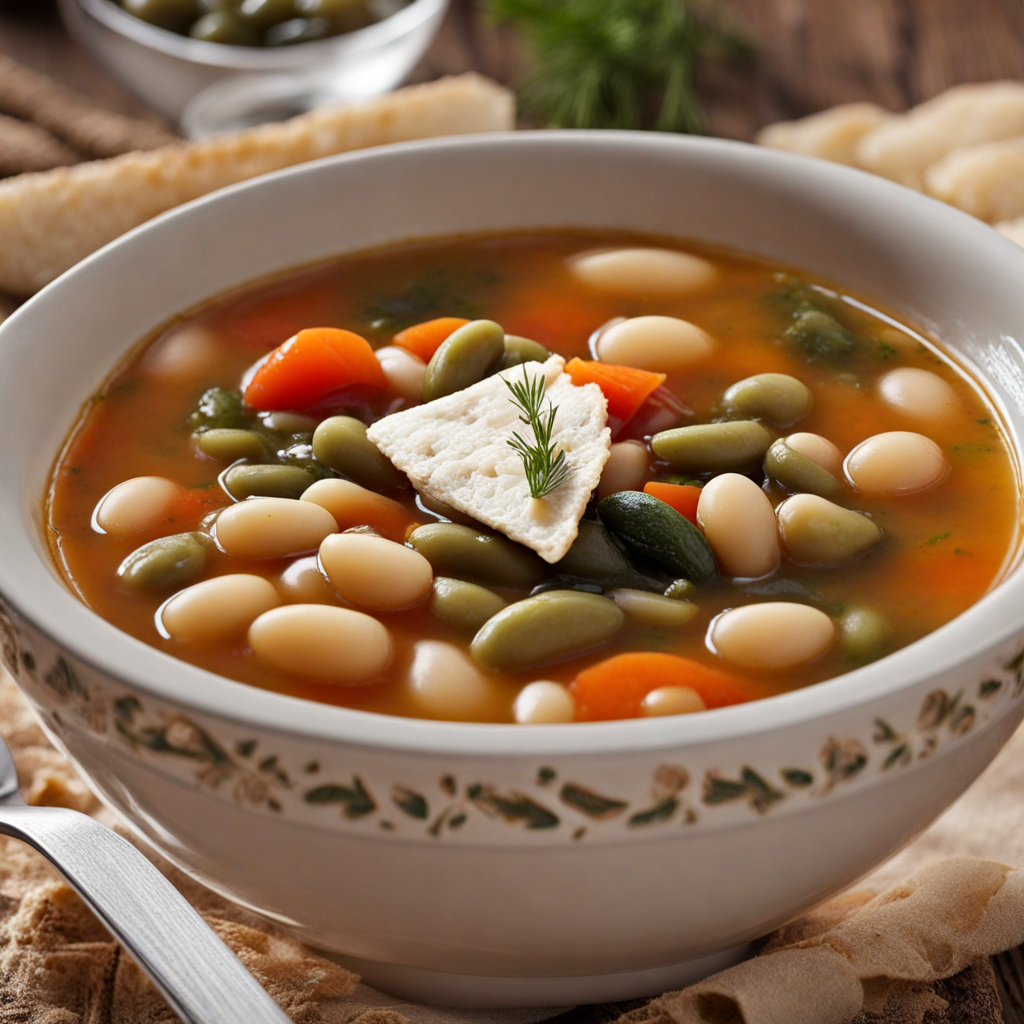Afelia
Afelia is a traditional Cypriot dish that beautifully showcases the island's rich culinary heritage. This delightful preparation typically features tender pork marinated in a unique blend of red wine and aromatic spices, particularly coriander seeds, which lends the dish its distinctive flavor profile. The marination process allows the meat to absorb all the flavors, resulting in a succulent and fragrant dish that is both comforting and invigorating. When cooked, the pork becomes melt-in-your-mouth tender, making each bite a joyous experience. The cooking method adds to the allure of Afelia. The marinated pork is usually sautéed to achieve a lovely caramelization before being simmered slowly, allowing the flavors to meld together harmoniously. Often accompanied by a side of fluffy rice or crusty bread, the dish is perfect for soaking up the rich sauce. Each serving is often garnished with fresh herbs, enhancing the visual appeal and adding a layer of freshness that balances the richness of the meat. Afelia is not just a meal; it’s a celebration of Cypriot culture and community. Traditionally enjoyed during family gatherings and special occasions, this dish evokes a sense of togetherness and nostalgia. The combination of robust flavors and tender meat creates an inviting atmosphere, making it a perfect centerpiece for shared meals. For anyone looking to explore new tastes, Afelia offers a glimpse into the heart of Cypriot cuisine, blending simplicity with depth, and promises a culinary adventure that lingers long after the last bite.
How It Became This Dish
The Culinary Journey of Αφέλια: A Taste of Cyprus Introduction Nestled in the azure embrace of the eastern Mediterranean, Cyprus boasts a rich tapestry of cultural influences, landscapes, and culinary traditions. Among its myriad of gastronomic delights, one dish stands out for its robust flavors and deep-rooted significance: Αφέλια (Afelia). This traditional Cypriot dish, primarily made with pork marinated in red wine and coriander, is not just a testament to the island's agricultural bounty but also a reflection of its historical and cultural evolution. Origins: The Historical Context The origins of Αφέλια can be traced back to the ancient practices of the island's inhabitants. Cyprus has been inhabited since the Neolithic period and has seen a plethora of civilizations, including the Mycenaeans, Romans, Byzantines, and Ottomans, each leaving an indelible mark on the culinary landscape. The use of pork in Cypriot cuisine can be linked to the island's early agricultural practices. Pigs were domesticated long ago, and their meat became a staple due to its availability and the versatility it offered in cooking. The practice of marinating meat, particularly in wine, is ancient and can be traced back to the region's viniculture. Cyprus has been producing wine since antiquity, with its indigenous grape varieties like Xynisteri and Mavro contributing to the rich flavors of local dishes. The use of coriander as a primary seasoning in Αφέλια also has roots in the island's diverse flora. Coriander, known for its aromatic properties, has been used in various Mediterranean cuisines for centuries, enhancing the dish's flavor profile and contributing to its distinctive taste. Cultural Significance Αφέλια is more than just a dish; it is a culinary emblem of Cypriot identity and hospitality. Traditionally served at family gatherings, weddings, and festive occasions, it embodies the spirit of togetherness and celebration. The preparation of Αφέλια often involves communal cooking, where families come together to marinate the pork, simmer it gently, and share stories over the meal. In the context of Cypriot culture, food serves as a medium for social bonding. The act of sharing a meal, especially one as richly flavored as Αφέλια, fosters connections among family and friends. It is customary for the dish to be accompanied by local wine, reinforcing the importance of viniculture in the island’s heritage. Moreover, the dish has also played a role in the island's historical narrative. During periods of conflict and social upheaval, traditional foods like Αφέλια became a source of comfort and continuity for the Cypriot people. The act of preparing and consuming familiar dishes provided a sense of normalcy and resilience, preserving cultural identity in challenging times. Development Over Time The evolution of Αφέλια can be viewed through the lens of Cyprus's culinary history. While the core preparation of the dish has remained consistent, various adaptations have emerged over the years. In the early 20th century, as Cyprus became a focal point for British colonial influence, the integration of new ingredients and cooking techniques began to shape traditional recipes. The British introduced a variety of spices and cooking methods that, while not traditionally Cypriot, found their way into local cuisine. However, the essence of Αφέλια remained intact, as the Cypriots maintained their culinary heritage while exploring new flavors. The post-independence era of the 1960s and 1970s saw a resurgence of interest in traditional Cypriot cuisine. With a renewed focus on local ingredients and culinary practices, chefs and home cooks alike began to elevate dishes like Αφέλια, showcasing their cultural significance. The rise of culinary tourism in the late 20th and early 21st centuries further propelled the dish into the international spotlight. As travelers sought authentic experiences, restaurants began to feature Αφέλια prominently on their menus, often accompanied by tales of its history and cultural significance. In contemporary Cypriot cuisine, chefs are experimenting with Αφέλια in innovative ways while respecting its traditional roots. Variations may include the use of different meats, such as lamb or beef, or the incorporation of additional spices and herbs for a modern twist. Some chefs even present the dish in a fusion style, pairing it with international flavors while still honoring its Cypriot origins. The Modern Interpretation of Αφέλια Today, Αφέλια is celebrated not only as a home-cooked meal but also as a staple of Cypriot restaurants, both locally and abroad. It has become emblematic of the Mediterranean diet, which emphasizes fresh ingredients, robust flavors, and communal dining. The dish is often accompanied by traditional sides such as pilaf rice, roasted potatoes, or seasonal vegetables, reflecting the Cypriot love for hearty, wholesome meals. Moreover, the dish has become a symbol of cultural pride for Cypriots, both on the island and in the diaspora. Culinary festivals, cooking classes, and food tours often highlight Αφέλια as a quintessential dish, inviting people to engage with Cypriot heritage through its flavors. Conclusion The history of Αφέλια is a captivating narrative that intertwines the island's agricultural practices, cultural identity, and culinary evolution. From its ancient roots in the fertile lands of Cyprus to its modern-day interpretations, this dish remains a profound expression of Cypriot tradition and hospitality. As it continues to adapt and thrive, Αφέλια stands as a testament to the resilience and richness of Cypriot cuisine, inviting all to experience a taste of the island's vibrant heritage. Whether enjoyed at a family gathering or in a bustling restaurant, Αφέλια encapsulates the essence of Cyprus—a flavorful journey through time, culture, and community.
You may like
Discover local flavors from Cyprus


